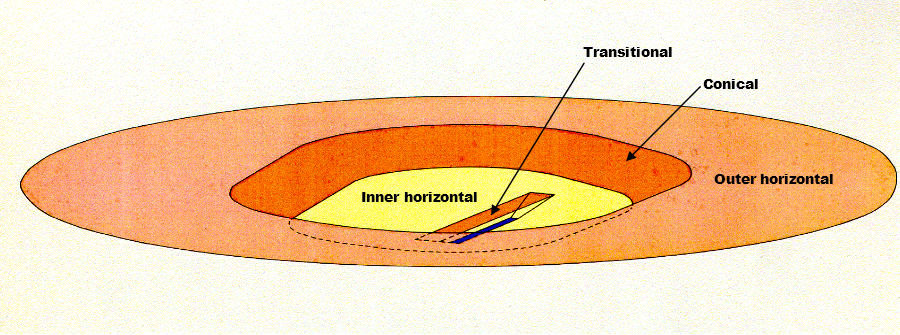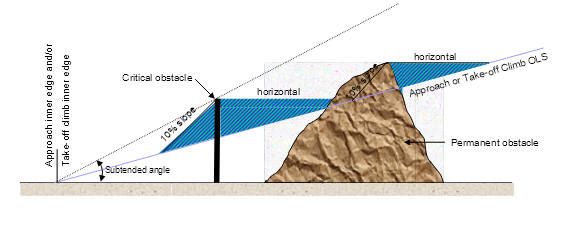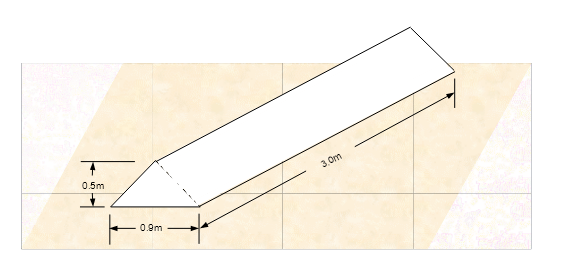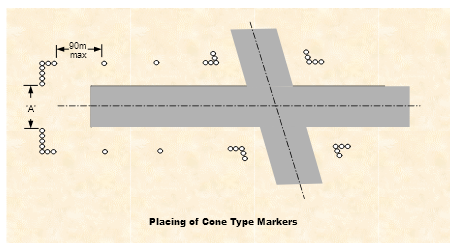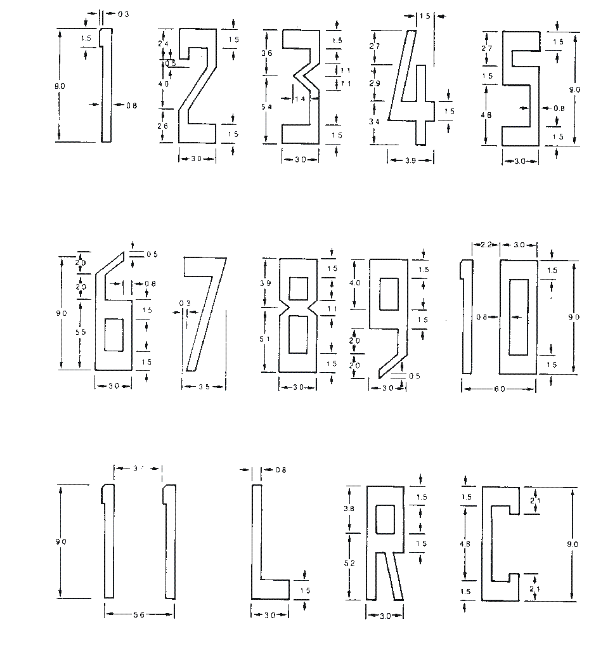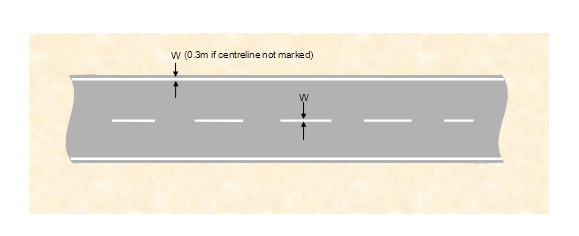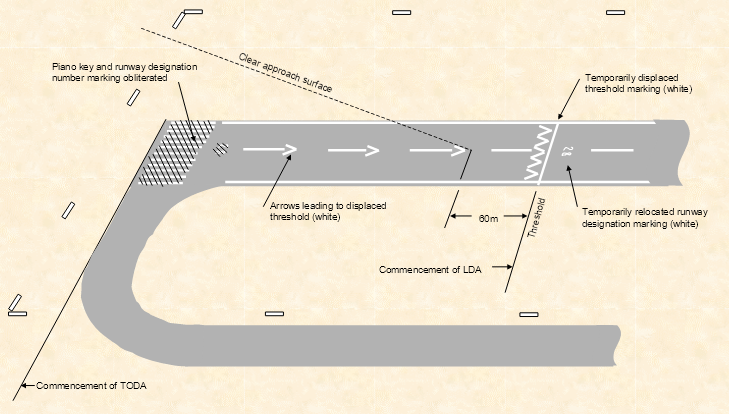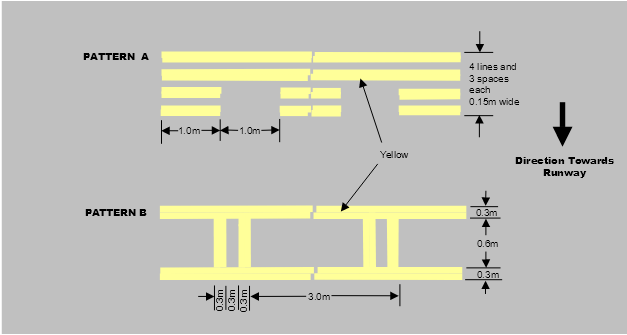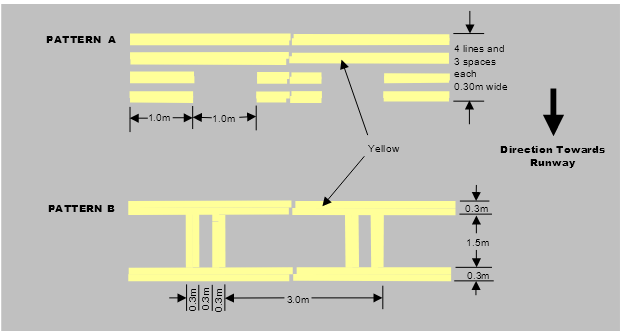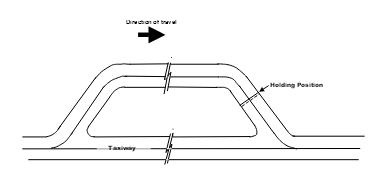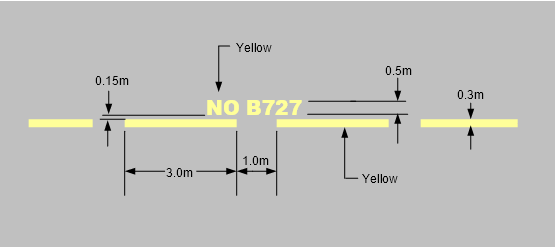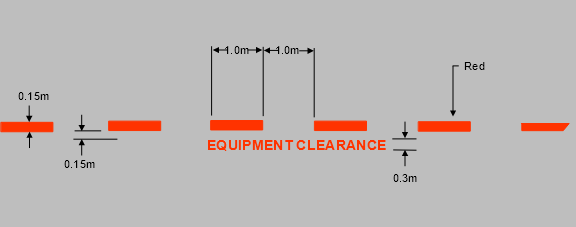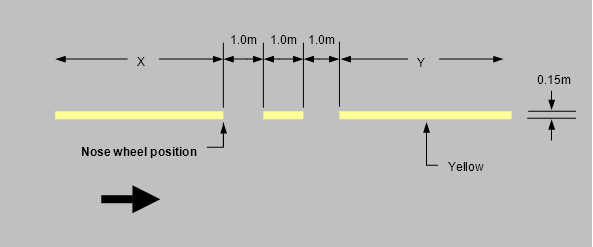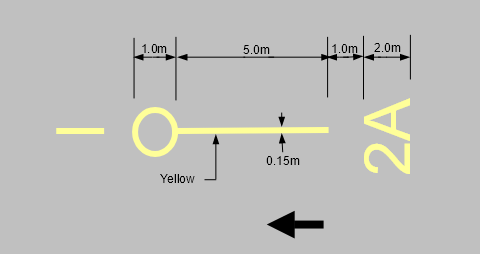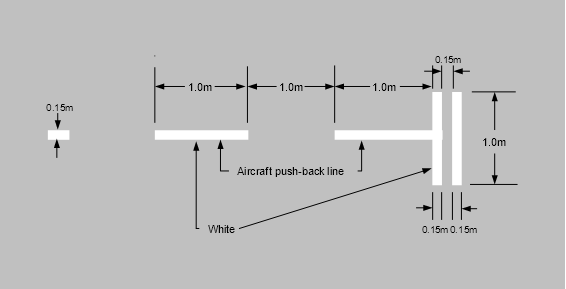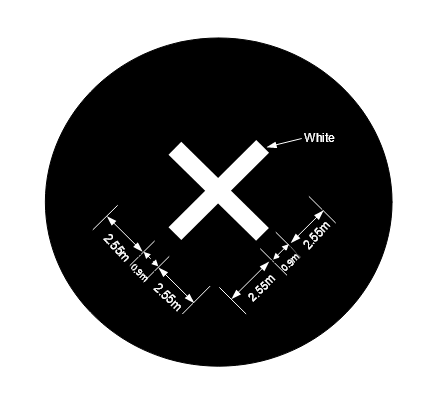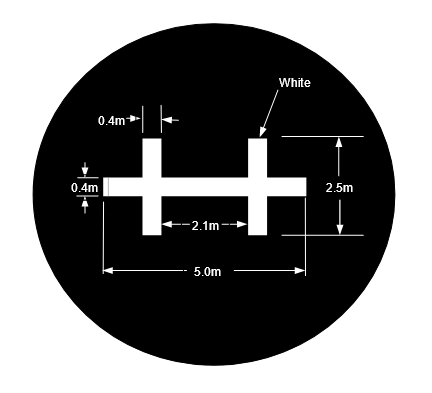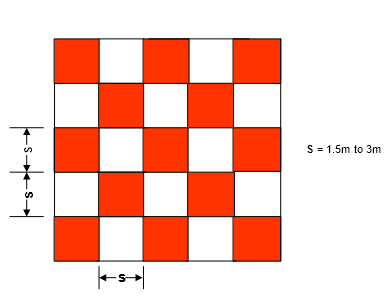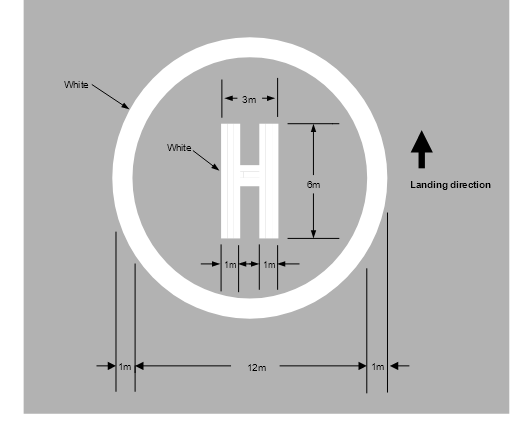Table of Contents
Table of Contents
Chapter 1: Introduction
Section 1.1: General
1.1.1 Commencement and Background
1.1.2 Document Set
1.1.3 Differences Between ICAO Standards and those in MOS
1.1.4 Differences published in AIP
1.1.5 MOS Documentation Change Management
1.1.6 Related Documents
Section 1.2: Definitions
Chapter 2: Application of Standards to Aerodromes
Section 2.1: General
2.1.1 Legislative Background and Applicability
2.1.2 Standard Changes and Existing Aerodrome Facilities
2.1.3 Exemptions to Standards
2.1.4 Conflict with Other Standards
2.1.5 Using ICAO Aerodrome Reference Code to Specify Standards
2.1.6 Aerodrome Reference Codes and Aeroplane Characteristics
2.1.7 Providing for Future Larger Aeroplanes
2.1.8 Non-instrument and Instrument Runways
2.1.9 Non-precision Approach Runways
Chapter 3: Applying for an Aerodrome Certificate
Section 3.1: General
3.1.1 Introduction
3.1.2 Aerodrome Certificate Processing Fee
3.1.3 Processing an Aerodrome Certificate Application
3.1.4 Granting of an Aerodrome Certificate
3.1.5 Maintenance and Control of Aerodrome Manual
3.1.6 Initiating NOTAM to Promulgate a Certified Aerodrome
3.1.7 Transitional Arrangements for Existing Aerodrome Licences
Section 3.2: Application for an Aerodrome Certificate
3.2.1 Sample Aerodrome Certificate Application
Chapter 4: Applying to Register an Aerodrome
Section 4.1: General
4.1.1 Introduction
4.1.2 Aerodrome Registration Application and Processing Fee
4.1.3 Approving a Registration Application
4.1.4 Maintenance of Registration
4.1.5 Aerodrome Safety Inspection Report
Section 4.2: Application to Register an Aerodrome
4.2.1 Application to Register an Aerodrome
Chapter 5: Aerodrome Information for AIP
Section 5.1: General
5.1.1 Introduction
5.1.2 Aerodrome Information to be Provided for a Certified Aerodrome
5.1.3 Standards for Determining Aerodrome Information
5.1.4 Obstacle Data
Section 5.2: Illustration of Declared Distances
5.2.1 Introduction
5.2.2 Calculation of Declared Distances
5.2.3 Obstacle-free Take-off Gradient
5.2.4 Critical Obstacle
5.2.5 Declared Distances for Intersection Departures
Section 5.3: Illustration of Supplementary Take-Off Distances Available and Shielding
5.3.1 Introduction
Chapter 6: Physical Characteristics
Section 6.1: General
6.1.1 Introduction
Section 6.2: Runways
6.2.1 Location of Runway Threshold
6.2.2 Length of Runway
6.2.3 Runway Width
6.2.4 Runway Turning Area
6.2.5 Parallel Runways
6.2.6 Runway Longitudinal Slope
6.2.7 Runway Sight Distance
6.2.8 Transverse Slopes on Runways
6.2.9 Runway Surface
6.2.10 Runway Bearing Strength
6.2.11 Runway Shoulders
6.2.12 Characteristics of Runway Shoulders
6.2.13 Transverse Slope on Runway Shoulder
6.2.14 Surface of Runway Shoulder
6.2.15 Provision of Runway Strip
6.2.16 Composition of Runway Strip
6.2.17 Runway Strip Length
6.2.18 Runway Strip Width
6.2.19 Longitudinal Slope on Graded Area of Runway Strip
6.2.20 Longitudinal Slope Changes on Graded Area of Runway Strip
6.2.21 Runway Strip Longitudinal Slope Changes at Runway Ends (Radio Altimeter Operating Area)
6.2.22 Runway Strip Transverse Slope
6.2.23 Surface of Graded Area of Runway Strip
6.2.24 Objects on Runway Strips
6.2.25 Runway End Safety Area (RESA)
6.2.26 Dimensions of RESA
6.2.27 Slopes on RESA
6.2.28 Objects on RESA
6.2.29 Bearing Strength of RESA
6.2.30 Clearways
6.2.31 Location of Clearways
6.2.32 Dimensions of Clearways
6.2.33 Slopes on Clearways
6.2.34 Objects on Clearways
6.2.35 Stopways
6.2.36 Dimensions of Stopways
6.2.37 Surface of Stopway
6.2.38 Stopway Slopes and Slope Changes
6.2.39 Bearing Strength of Stopway
Section 6.3: Taxiways
6.3.1 Taxiway Width
6.3.2 Taxiway Edge Clearance
6.3.3 Taxiway Curves
6.3.4 Taxiway Longitudinal Slope
6.3.5 Taxiway Transverse Slope
6.3.6 Taxiway Sight Distance
6.3.7 Taxiway Bearing Strength
6.3.8 Taxiway Shoulders
6.3.9 Width of Taxiway Shoulders
6.3.10 Surface of Taxiway Shoulders
6.3.11 Taxiway Strips
6.3.12 Width of Taxiway Strip
6.3.13 Width of Graded Area of Taxiway Strip
6.3.14 Slope of Taxiway Strip
6.3.15 Objects on Taxiway Strip
6.3.16 Taxiways on Bridges
6.3.17 Taxiway Minimum Separation Distances
Section 6.4: Holding Bays, Runway-Holding Positions, Intermediate Holding Positions and Road-Holding Positions
6.4.1 Introduction
6.4.2 Provision of a Holding Bay, Runway-holding Position, Intermediate Holding Position and Road-holding Position
6.4.3 Location of Holding Bay, Runway-holding Position, Intermediate Holding Position or Road-holding Position
6.4.4 Distance from Runway-holding Position, Intermediate Holding Position or Road-holding Position to Runway Centreline
Section 6.5: Aprons
6.5.1 Location of Apron
6.5.2 Separation Distances on Aprons
6.5.3 Slopes on Aprons
6.5.4 Apron Bearing Strength
6.5.5 Apron Road
Section 6.6: Jet Blast
6.6.1 General
6.6.2 Jet Blast and Propeller Wash Hazards
Section 6.7: Glider Facilities
6.7.1 Location of Glider Runway Strips
6.7.2 Dimensions of Glider Runway Strips
6.7.3 Glider Parking Areas
6.7.4 Glider Runway Strip Serviceability
6.7.5 Glider Runway Strip Standards
6.7.6 Notification of Glider Facilities and Procedures
Chapter 7: Obstacle Restriction and Limitation
Section 7.1: General
7.1.1 Introduction
7.1.2 Obstacle Restriction
7.1.3 Obstacle Limitation
7.1.4 Procedures for Aerodrome Operators to Deal with Obstacles
7.1.5 Objects Outside the OLS
7.1.6 Objects That Could Become Obstacles
7.1.7 Monitoring of Obstacles Associated with Instrument Runways
7.1.8 Additional Obstacle Assessment for an Existing Non-instrument Runway to be Upgraded to a Non-precision Instrument Runway
7.1.9 Obstacle Protection for Curved Take-Off
Section 7.2: Aerodrome Obstacle Charts
7.2.1 Type A Charts
7.2.2 Type B Charts
7.2.3 Type C Charts
7.2.4 Precision Approach Terrain Charts – ICAO
Section 7.3: Obstacle Limitation Surfaces
7.3.1 General
7.3.2 Description of OLS
Section 7.4: Principles of Shielding
7.4.1 General
7.4.2 Shielding Principles
Chapter 8: Visual Aids Provided by Aerodrome Markings, Markers, Signals and Signs
Section 8.1: General
8.1.1 Introduction
8.1.2 Closed Aerodrome
8.1.3 Colours
8.1.4 Visibility
Section 8.2: Markers
8.2.1 Introduction
8.2.2 The Use of Markers on a Runway Strip
8.2.3 The Use of Markers on an Unsealed Runway
8.2.4 The Use of Markers on an Unsealed Taxiway
8.2.5 The Use of Markers on an Unsealed Apron
Section 8.3: Runway Markings
8.3.1 General
8.3.2 Pre-runway-end Markings
8.3.3 Runway Centreline Markings
8.3.4 Runway Designation Markings
8.3.5 Runway End Markings
8.3.6 Runway Side-stripe Markings
8.3.7 Aiming Point Markings
8.3.7A Touchdown Zone Marking
8.3.8 Runway Threshold Markings
8.3.9 Temporarily Displaced Threshold Markings
8.3.10 Runway Land and Hold Short Position Markings
Section 8.4: Taxiway Markings
8.4.1 Introduction
8.4.2 Taxi Guideline Markings
8.4.3 Runway Holding Position Markings
8.4.4 Intermediate Holding Position Markings
8.4.5 Taxiway Edge Markings
8.4.6 Holding Bay Markings
8.4.7 Taxiway Pavement Strength Limit Markings
Section 8.5: Apron Markings
8.5.1 Introduction
8.5.2 Apron Taxi Guideline Markings
8.5.3 Apron Edge Markings
8.5.4 Parking Clearance Line
8.5.5 Aircraft Type Limit Line
8.5.6 Parking Weight Limit Line
8.5.7 Leased Area Line
8.5.8 Equipment Clearance Line
8.5.9 Equipment Storage Markings
8.5.10 Apron Service Road Markings
8.5.11 Aircraft Parking Position Markings
8.5.12 Lead-in Line
8.5.13 Taxi Lead-in Line Designation
8.5.14 Pilot Turn Line
8.5.15 Primary Aircraft Parking Position Markings
8.5.16 Marshaller Stop Line
8.5.17 Pilot Stop Line
8.5.18 Alignment Line
8.5.19 Secondary Aircraft Parking Position Markings
8.5.20 Keyhole Marking
8.5.21 Triangle Marking
8.5.22 Lead-out Line
8.5.23 Designation Markings
8.5.24 Aircraft Parking Position Designation
8.5.25 Designation Characters for Taxi and Apron Markings
8.5.26 Tug operator Guidance Marking
8.5.27 Aircraft Push-back Lines
8.5.28 Tug Parking Position Lines
8.5.29 Towbar Disconnect Markings
8.5.30 Push-back Limit Markings
8.5.31 Push-back Alignment Bars
8.5.32 Passenger Path Markings
8.5.33 Typical Apron Markings
Section 8.6: Movement Area Guidance Signs (MAGS)
8.6.1 Introduction
8.6.2 Naming of taxiways
8.6.3 Dimensions, Location and Lettering
8.6.4 Sign Size and Location Distances, Including Runway Exit Signs
8.6.5 Structural
8.6.6 Illumination
8.6.7 MAGS with Mandatory Instructions
8.6.8 Runway Designation Signs
8.6.9 Category I, II or III Runway Designation Signs
8.6.10 Runway Holding Position Sign
8.6.11 Aircraft NO ENTRY Sign
8.6.12 Vehicular STOP Signs
8.6.13 Runway/Runway Intersection Signs
8.6.14 MAGS with Information
8.6.15 Taxiway Location Signs
8.6.16 Direction Signs
8.6.17 Destination Signs
8.6.18 Take-off Run Available Sign
8.6.19 Runway Exit Signs
8.6.20 LAHSO Distance To Go Signs
Section 8.7: Wind Direction Indicators
8.7.1 Requirements
8.7.2 Standards
Section 8.8: Ground Signals
8.8.1 Signal Areas
8.8.2 Ground Signals in Signal Area
Section 8.9: Marking of Unserviceable and Work Areas
8.9.1 Introduction
8.9.2 Marking of Unserviceable Areas on Runways, Taxiways and Aprons
8.9.3 Use of Unserviceability Markers
8.9.4 Works Limit Markers
Section 8.10: Obstacle Markings
8.10.1 General
8.10.2 Marking of Obstacles
8.10.3 Marking of Temporary and Transient Obstacles
8.10.4 Marking of Vehicles
Section 8.11: Helicopter Areas on Aerodromes
8.11.1 Introduction
8.11.2 Helicopter Landing and Lift-off Area Markings
8.11.3 Helicopter Apron Markings
8.11.4 Helicopter Parking Position Markings
8.11.5 Helicopter Taxi Guideline Designation
8.11.6 Helicopter Parking Position Numbers
8.11.7 Helicopter Apron Edge Markings
Section 8.12: Marking of Glider Runway Strips on an Aerodrome
Chapter 9: Visual Aids Provided by Aerodrome Lighting......................9-1
Section 9.1: General.....................................................9-1
9.1.1 Application and Definitions.......................................9-1
9.1.2 Standardisation of Aerodrome Lighting.............................9-4
9.1.3 Lighting in the Vicinity of an Aerodrome............................9-5
9.1.4 Minimum Lighting System Requirements...........................9-5
9.1.5 Primary Source of Electricity Supply...............................9-6
9.1.6 Electrical Circuitry...............................................9-6
9.1.7 Secondary Power Supply........................................9-7
9.1.8 Switch-over Time...............................................9-8
9.1.9 Standby Power Supply..........................................9-9
9.1.10 Portable Lighting................................................9-9
9.1.11 Light Fixtures and Supporting Structures..........................9-11
9.1.12 Elevated and Inset Lights.......................................9-12
9.1.13 Colour of Light Shown..........................................9-12
9.1.14 Light intensity and Control......................................9-13
9.1.15 Commissioning of Lighting Systems..............................9-17
Section 9.2: Colours for Aeronautical Ground Lights.....................9-20
9.2.1 General......................................................9-20
9.2.2 Chromaticities.................................................9-20
9.2.3 Discrimination Between Coloured Lights..........................9-21
Section 9.3: Pilot Activated Lighting Systems............................9-23
9.3.1 General......................................................9-23
9.3.2 VHF Carrier Activation Code....................................9-24
9.3.3 VHF Carrier Detector Technical Requirements.....................9-25
9.3.4 Inputs to the PAL..............................................9-25
9.3.5 Fail-safe Arrangements with PAL system.........................9-26
9.3.6 Access to Manual Switches.....................................9-26
9.3.7 Receiving Antenna.............................................9-27
9.3.8 PAL with Audio Acknowledgment................................9-27
Section 9.4: Obstacle Lighting..........................................9-28
9.4.1 General......................................................9-28
9.4.2 Types of Obstacle Lighting and Their Use.........................9-29
9.4.3 Location of Obstacle Lights.....................................9-29
9.4.4 Natural Obstacles..............................................9-35
9.4.5 Temporary Obstacles..........................................9-35
9.4.6 Characteristics of Low Intensity Obstacle Lights....................9-35
9.4.7 Characteristics of Medium Intensity Obstacle Lights................9-36
9.4.8 Characteristics of High Intensity Obstacle Lights...................9-36
9.4.9 Floodlighting of Obstacles......................................9-38
9.4.10 Ongoing Availability of Obstacle Lights...........................9-38
Section 9.5: Aerodrome Beacons........................................9-40
9.5.1 General......................................................9-40
Section 9.6: Illuminated Wind Direction Indicator.........................9-42
9.6.1 General......................................................9-42
Section 9.7: Approach Lighting Systems.................................9-44
9.7.1 Simple Approach Lighting System...............................9-44
9.7.2 Precision Approach Category I Lighting System....................9-44
9.7.3 Precision Approach Categories II and III Lighting System...........9-48
Section 9.8: Isocandela Diagrams of Approach Lighting..................9-52
9.8.1 Collective Notes...............................................9-52
Section 9.9: Visual Approach Slope Indicator Systems....................9-54
9.9.1 General......................................................9-54
9.9.2 Obstacle Assessment Surface...................................9-55
9.9.3 T-VASIS and AT-VASIS........................................9-57
9.9.4 Precision Approach Path Indicator (PAPI) system..................9-62
Section 9.10: Runway Lighting..........................................9-70
9.10.1 Types of Runway Edge Lighting Systems.........................9-70
9.10.2 Runway Edge Lights...........................................9-70
9.10.3 Location of Runway Edge Lights.................................9-71
9.10.4 Longitudinal Spacing of Runway Edge Lights......................9-71
9.10.5 Lateral Spacing of Runway Edge Lights...........................9-72
9.10.6 Characteristics of Low and Medium Intensity Runway Edge Lights...9-72
9.10.7 Characteristics of High Intensity Runway Edge Lights...............9-72
9.10.8 Use of Bidirectional or Back-to-back Light Fittings..................9-73
9.10.9 Runway Threshold Lights.......................................9-73
9.10.10 Location of Runway Threshold Lights.............................9-73
9.10.11 Pattern of Low Intensity and Medium Intensity Runway Threshold Lights9-73
9.10.12 Pattern of High Intensity Runway Threshold Lights.................9-74
9.10.13 Characteristics of Low Intensity and Medium Intensity Runway Threshold Lights 9-74
9.10.14 Characteristics of High Intensity Runway Threshold Lights..........9-75
9.10.15 Additional Lighting to Enhance Threshold Location.................9-75
9.10.16 Runway End Lights............................................9-78
9.10.17 Location of Runway End Lights..................................9-78
9.10.18 Pattern of Runway End Lights...................................9-78
9.10.19 Characteristics of Low and Medium Intensity Runway End Lights.....9-79
9.10.20 Characteristics of High Intensity Runway End Lights................9-79
9.10.21 Runway Turning Area Edge Lights...............................9-79
9.10.22 Stopway Lights................................................9-80
9.10.23 Hold Short Lights..............................................9-80
9.10.24 Runway Centreline Lights.......................................9-81
9.10.25 Runway Touchdown Zone Lights................................9-82
9.10.26 Photometric Characteristics of Runway Lights.....................9-82
9.10.27 Installation and Aiming of Light Fittings...........................9-83
9.10.28 Illustrations of Runway Lighting..................................9-83
Section 9.11: Isocandela Diagrams of Runway Lighting...................9-84
9.11.1 Collective Notes...............................................9-84
Section 9.12: Illustrations of Runway Lighting............................9-96
Section 9.13: Taxiway Lighting.........................................9-103
9.13.1 Provision of Taxiway Centreline Lights...........................9-103
9.13.2 Provision of Taxiway Edge Lights...............................9-103
9.13.3 Taxiway Markers.............................................9-103
9.13.4 Apron Taxiway Lighting........................................9-104
9.13.5 Use of Different Types of Taxiway Lights.........................9-104
9.13.6 Control of Lights on Taxiways..................................9-104
9.13.7 Location of Taxiway Centreline Lights...........................9-105
9.13.8 Spacing of Taxiway Centreline Lights............................9-105
9.13.9 Location of Taxiway Centreline Lights on Exit Taxiways............9-106
9.13.10 Location of Taxiway Centreline Lights on Rapid Exit Taxiways......9-106
9.13.11 Characteristics of Taxiway Centreline Lights......................9-107
9.13.12 Beam Dimensions and Light Distribution of Taxiway Centreline Lights9-107
9.13.13 Location of Taxiway Edge Lights................................9-108
9.13.14 Spacing of Taxiway Edge Lights................................9-109
9.13.15 Characteristics of Taxiway Edge Lights..........................9-110
9.13.16 Provision of Runway Guard Lights..............................9-110
9.13.17 Pattern and Location of Runway Guard Lights....................9-111
9.13.18 Characteristics of Runway Guard Lights.........................9-112
9.13.19 Control of Runway Guard Lights................................9-113
9.13.20 Provision of Intermediate Holding Position Lights.................9-113
9.13.21 Pattern and Location of Intermediate Holding Position Lights.......9-113
9.13.22 Characteristics of Intermediate Holding Position Lights............9-114
9.13.23 Stop Bars....................................................9-114
9.13.24 Location of Stop Bars.........................................9-115
9.13.25 Characteristics of Stop Bars....................................9-115
9.13.26 Taxiway Edge Markers........................................9-115
9.13.27 Characteristics of Taxiway Edge Markers........................9-116
9.13.28 Taxiway Centreline Markers....................................9-116
9.13.29 Characteristics of Taxiway Centreline Markers....................9-116
9.13.30 Photometric Characteristics of Taxiway Lights....................9-116
9.13.31 Installation and Aiming of Light Fittings..........................9-117
Section 9.14: Isocandela Diagrams for Taxiway Lights...................9-118
9.14.1 Collective Notes to Figures....................................9-118
Section 9.15: Illustrations of Taxiway Lighting..........................9-125
Section 9.16: Apron Floodlighting......................................9-128
9.16.1 Introduction..................................................9-128
9.16.2 Provision of Apron Floodlighting................................9-128
9.16.3 Location of Apron Floodlighting.................................9-128
9.16.4 Characteristics of Apron Floodlighting...........................9-129
Section 9.17: Visual Docking Guidance Systems........................9-131
9.17.1 Provision of Visual Docking Guidance Systems...................9-131
9.17.2 Characteristics of Visual Docking Guidance Systems..............9-131
9.17.3 Azimuth Guidance Unit - Location...............................9-132
9.17.4 Azimuth Guidance Unit - Characteristics.........................9-132
9.17.5 Stopping Position Indicator - Location...........................9-132
9.17.6 Stopping Position Indicator - Characteristics......................9-132
9.17.7 Parking Position Identification Sign..............................9-133
9.17.8 Notification of Type of Aircraft Docking Guidance Systems.........9-133
Section 9.18: Lighting Associated with Closed and Unserviceable Areas..9-134
9.18.1 Closed Runway or Taxiway....................................9-134
9.18.2 Unserviceable Areas..........................................9-134
9.18.3 Characteristics of Unserviceability Lights.........................9-134
Section 9.19: Other Lights on an Aerodrome............................9-135
9.19.1 Vehicle Warning Lights........................................9-135
9.19.2 Works Limit Lights............................................9-135
9.19.3 Road and Car Park Lighting....................................9-135
9.19.4 Road-holding Position Light....................................9-135
Section 9.20: Monitoring, Maintenance and Serviceability of Aerodrome Lighting 9-137
9.20.1 General.....................................................9-137
9.20.2 Reporting of Aerodrome Lighting Outage........................9-137
Section 9.21: Lighting in the Vicinity of Aerodromes.....................9-141
9.21.1 Advice to Lighting Designers...................................9-141
9.21.1A Purpose of the Section........................................9-141
9.21.2 Legislative Background........................................9-141
9.21.3 General Requirement.........................................9-142
9.21.4 Light Fittings.................................................9-142
9.21.5 Coloured Lights..............................................9-143
9.21.6 Information and Correspondence...............................9-143
Section 9.22: Use of Unarmoured Cables for Aerodrome Lighting........9-145
9.22.1 Introduction..................................................9-145
9.22.2 Significant Areas of the Dispensation............................9-145
9.22.3 Conditions Governing the Dispensation..........................9-145
9.22.4 Aspects to Note..............................................9-146
9.22.5 Acceptability of an Installation to the Supply Authority.............9-146
Chapter 10: Operating Standards for Certified Aerodromes..................10-1
Section 10.1: General...................................................10-1
10.1.1 Introduction...................................................10-1
10.1.2 Aerodrome Manual and Aerodrome Operating Procedures..........10-1
10.1.3 Training of Aerodrome Personnel Involved with Safety Functions.....10-1
10.1.4 Aerodrome Safety Management System (SMS)....................10-2
Section 10.2: Inspecting and Reporting Aerodrome Serviceability.........10-3
10.2.1 General......................................................10-3
10.2.2 Significant Objects.............................................10-3
10.2.3 Surface Conditions of the Movement Area, Including the Presence of Water 10-4
10.2.4 Aerodrome Markings, Lightings, Wind Direction Indicators and Ground Signals 10-4
10.2.5 Cleanliness of the Movement Area...............................10-4
10.2.6 Obstacles Infringing the Take-off, Approach and Transitional Surfaces 10-5
10.2.7 Birds or Animals on, or in the Vicinity of, the Movement Area........10-5
10.2.8 Empirical Assessment of the Bearing Strength of Unrated Runway Pavements and Runway Strips 10-5
10.2.9 Currency of NOTAMs..........................................10-6
10.2.10 Aerodrome Fencing............................................10-6
10.2.11 Aerodrome Frequency Response Unit............................10-6
10.2.12 Inspection Logbooks...........................................10-6
Section 10.3: Initiating a NOTAM........................................10-7
10.3.1 Introduction...................................................10-7
10.3.2 Changes Reported to Australian NOTAM Office....................10-7
10.3.3 Time-Limited NOTAM..........................................10-8
10.3.4 Permanent NOTAM............................................10-8
10.3.5 Making Changes to Aerodrome Information Published in AIP-ERSA..10-9
10.3.6 Bird or Animal Hazard Warning..................................10-9
10.3.7 New or Upgraded Visual Aids...................................10-9
10.3.8 Changes to Type A Chart Information............................10-9
10.3.9 Follow up Actions..............................................10-9
10.3.10 Record Keeping...............................................10-9
Section 10.4: Sample Aerodrome Report Form..........................10-10
Section 10.5: Examples of NOTAM and Listing of Abbreviations..........10-11
10.5.1 Examples....................................................10-11
10.5.2 General Word Abbreviations and Phrase Contractions to Minimise Message Length of Aerodrome NOTAMs 10-14
Section 10.6: Appointment of Reporting Officers........................10-31
10.6.1 General.....................................................10-31
10.6.2 Reporting Officer Qualifications.................................10-31
10.6.3 What to Report...............................................10-31
10.6.4 Monitoring Activities Outside Aerodrome.........................10-32
Section 10.7: Aerodrome Emergency Planning..........................10-33
10.7.1 Introduction..................................................10-33
10.7.2 Records.....................................................10-34
10.7.3 Disabled Aircraft Removal.....................................10-34
Section 10.8: Guidelines for Aerodrome Emergency Plans...............10-35
10.8.1 General.....................................................10-35
10.8.2 Medical Subcommittee........................................10-36
10.8.3 Testing Facilities and Reviewing Roles..........................10-36
10.8.4 Aerodrome Emergency Exercises...............................10-36
10.8.5 Emergency Operations Centre and Mobile Command Post.........10-37
10.8.6 Definitions of Command, Control, and Coordination...............10-37
10.8.7 Role of the Police.............................................10-38
Section 10.9: Control of Airside Access Including Vehicle Control........10-39
10.9.1 Introduction..................................................10-39
10.9.2 Airside Vehicle Control........................................10-39
10.9.3 Airside drivers................................................10-39
10.9.4 Technical Standards for Electronic Surveillance Equipment Fitted to Vehicles 10-40
Section 10.10: Aerodrome Works Safety................................10-42
10.10.1 Introduction..................................................10-42
10.10.2 Method of Working Plans......................................10-42
10.10.3 Time-Limited Works...........................................10-43
10.10.4 Restrictions on Carrying Out Time-Limited Works.................10-43
10.10.5 Restoration of Normal Safety Standards.........................10-44
10.10.6 Resumption of Aerodrome Works...............................10-44
10.10.7 Management and Control of Aerodrome Works...................10-44
10.10.8 Markers, Markings and Lights..................................10-45
10.10.9 Communication Equipment....................................10-45
10.10.10 Completion..................................................10-45
10.10.11 Pavement Overlay Works......................................10-46
10.10.12 Works on Runway Strips......................................10-46
Section 10.11: Method of Working Plans................................10-48
10.11.1 Introduction..................................................10-48
10.11.2 Title Page...................................................10-48
10.11.3 Works Information............................................10-48
10.11.4 Restrictions to Aircraft Operations and Issue of NOTAMs..........10-49
10.11.5 Work Stages.................................................10-49
10.11.6 Emergencies and Adverse Weather.............................10-49
10.11.7 NOTAMs....................................................10-49
10.11.8 Restrictions to Works Organisations.............................10-49
10.11.9 Personnel and Equipment.....................................10-49
10.11.10 Access......................................................10-49
10.11.11 Aerodrome Markers, Markings and Lights........................10-50
10.11.12 Protection of Electrical Services................................10-50
10.11.13 Special Requirements.........................................10-50
10.11.14 Administration................................................10-50
10.11.15 Authority....................................................10-50
10.11.16 Drawings....................................................10-50
10.11.17 Distribution List...............................................10-51
Section 10.12: Functions of a Works Safety Officer......................10-52
10.12.1 Works Safety Officer..........................................10-52
Section 10.13: Aircraft Parking.........................................10-54
10.13.1 Introduction..................................................10-54
10.13.2 Apron Congestion............................................10-54
10.13.3 Apron Safety Management.....................................10-54
Section 10.14: Bird and Animal Hazard Management.....................10-55
10.14.1 Introduction..................................................10-55
Section 10.15: Pavement Maintenance..................................10-56
10.15.1 Pavement Cleanliness........................................10-56
10.15.2 Runway Surface Friction.......................................10-56
10.15.3 Deterioration of Runway Grooves...............................10-57
10.15.4 Surface Irregularities..........................................10-58
10.15.5 Standards for Natural and Gravel Surface Runways...............10-58
Section 10.16: Maintenance Around Navigational Aids...................10-59
10.16.1 Introduction..................................................10-59
Section 10.17: Aerodrome Safety Procedures during Conditions of Reduced Visibility or Low Cloud 10-60
10.17.1 Introduction..................................................10-60
10.17.2 Development of Low Visibility Procedures........................10-60
10.17.3 Implementation of Low Visibility Procedures......................10-61
10.17.4 Review of Low Visibility Procedures.............................10-62
Section 10.18: Aerodrome Technical Inspections........................10-63
10.18.1 Introduction..................................................10-63
Section 10.19: Runway Visibility Assessments by Ground Personnel.....10-64
10.19.1 Application...................................................10-64
10.19.2 Facilities and Procedures......................................10-64
10.19.3 Appointed Persons Conducting Runway Visibility Assessments.....10-65
10.19.4 Procedures for Conducting a Runway Visibility Assessment........10-66
Chapter 11: Standards for Other Aerodrome Facilities.......................11-1
Section 11.1: General...................................................11-1
11.1.1 Introduction...................................................11-1
11.1.2 Traffic Control Towers..........................................11-1
11.1.3 Standards For Siting and Clearance Areas for Airways Facilities on Airports 11-1
11.1.4 General Siting Requirements....................................11-2
11.1.4A Siting of Equipment and Installations on Operational Areas..........11-3
11.1.5 Navigation Aid Facilities........................................11-4
11.1.6 VOR Facilities.................................................11-5
11.1.7 DME Facilities.................................................11-5
11.1.8 Instrument Landing System.....................................11-6
11.1.9 Protection of ILS Installations....................................11-6
11.1.10 Critical and Sensitive Areas.....................................11-7
11.1.11 Obstructions around Marker Beacons............................11-8
11.1.12 Locator Beacons..............................................11-8
11.1.13 Non-Directional Beacons (NDB).................................11-8
11.1.14 Radar Sensor Sites............................................11-9
11.1.15 Communication Facilities......................................11-10
11.1.16 Ground Earthing Points........................................11-11
11.1.17 Testing of Ground Earthing Points..............................11-12
11.1.18 Inspection of Ground Earthing Points............................11-12
11.1.19 Remedial Action..............................................11-12
11.1.20 Compass Swinging Site.......................................11-12
11.1.21 Automatic Weather Information Stations.........................11-13
11.1.22 Light Aircraft Tie-Down Facilities................................11-13
Chapter 12: Operating Standards for Registered Aerodromes................12-1
Section 12.1: General...................................................12-1
12.1.1 Introduction...................................................12-1
12.1.2 Aerodrome Reporting Officer....................................12-2
12.1.3 Aerodrome Serviceability Inspections.............................12-2
12.1.4 Frequency of Serviceability Inspection............................12-3
12.1.5 Record of Inspections and Remedial Actions......................12-3
12.1.6 Reporting Changes............................................12-3
12.1.7 Aerodrome Works.............................................12-3
12.1.8 Safety Inspection Report........................................12-4
12.1.9 Reporting of Obstacles.........................................12-4
Section 12.2: Sample Aerodrome Report Form...........................12-5
Chapter 13: Standards for Aerodromes Intended for Small Aeroplanes Conducting Air Transport Operations Under CASR 121b.......13-1
Section 13.1: General...................................................13-1
13.1.1 Commencement and Introduction................................13-1
13.1.2 Aerodrome Standards..........................................13-1
13.1.3 Aerodrome Markings...........................................13-4
13.1.4 Aerodrome Lighting............................................13-6
13.1.5 Wind Direction Indicators.......................................13-7
13.1.6 Ground Signal and Signal Area..................................13-7
13.1.7 Runway and Runway Strip Conditions............................13-8
13.1.8 Aerodrome Serviceability Reporting..............................13-9
Chapter 14: Radio Communication Facilities Provided by an Aerodrome Operator14-1
Section 14.1: General...................................................14-1
14.1.1 Introduction...................................................14-1
14.1.2 Definitions and Abbreviations....................................14-1
Section 14.2: Certified Air/Ground Radio Services........................14-2
14.2.1 Application to be a CA/GRO.....................................14-2
14.2.2 Qualifications.................................................14-2
14.2.3 CA/GRS Operating Standards and Procedures....................14-2
14.2.4 Broadcasting of Aerodrome Information on AAIS...................14-4
Section 14.3: Frequency Confirmation System...........................14-5
14.3.1 Requirement for Frequency Confirmation System..................14-5
14.3.2 Aerodrome Frequency Response Unit (AFRU).....................14-5
14.3.3 Use of the AFRU..............................................14-5
14.3.4 Operating Performance Requirements of AFRU....................14-6
14.3.5 AFRU Technical Specification...................................14-6
14.3.6 AFRU with PAL Features.......................................14-8
14.3.7 Technical Specifications for Optional Pilot-Activated Lighting Control.14-8
14.3.8 AFRU+PAL Commissioning Flight Test...........................14-9
Section 14.4: Unicom Services.........................................14-11
14.4.1 General.....................................................14-11
REVISION HISTORY........................................................rh-1
NOTES TO MANUAL OF STANDARDS PART 139.......................NOTES-1

















